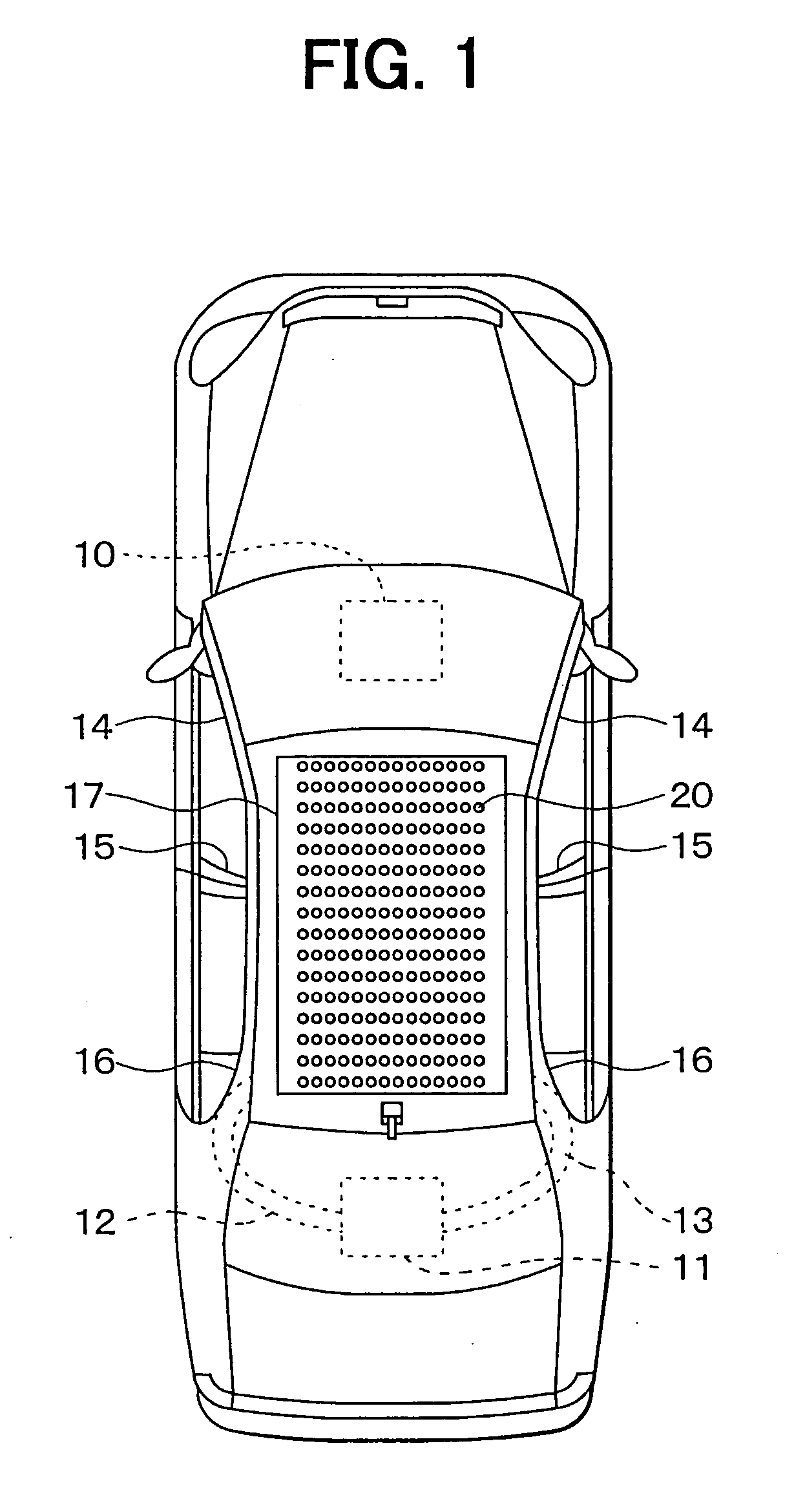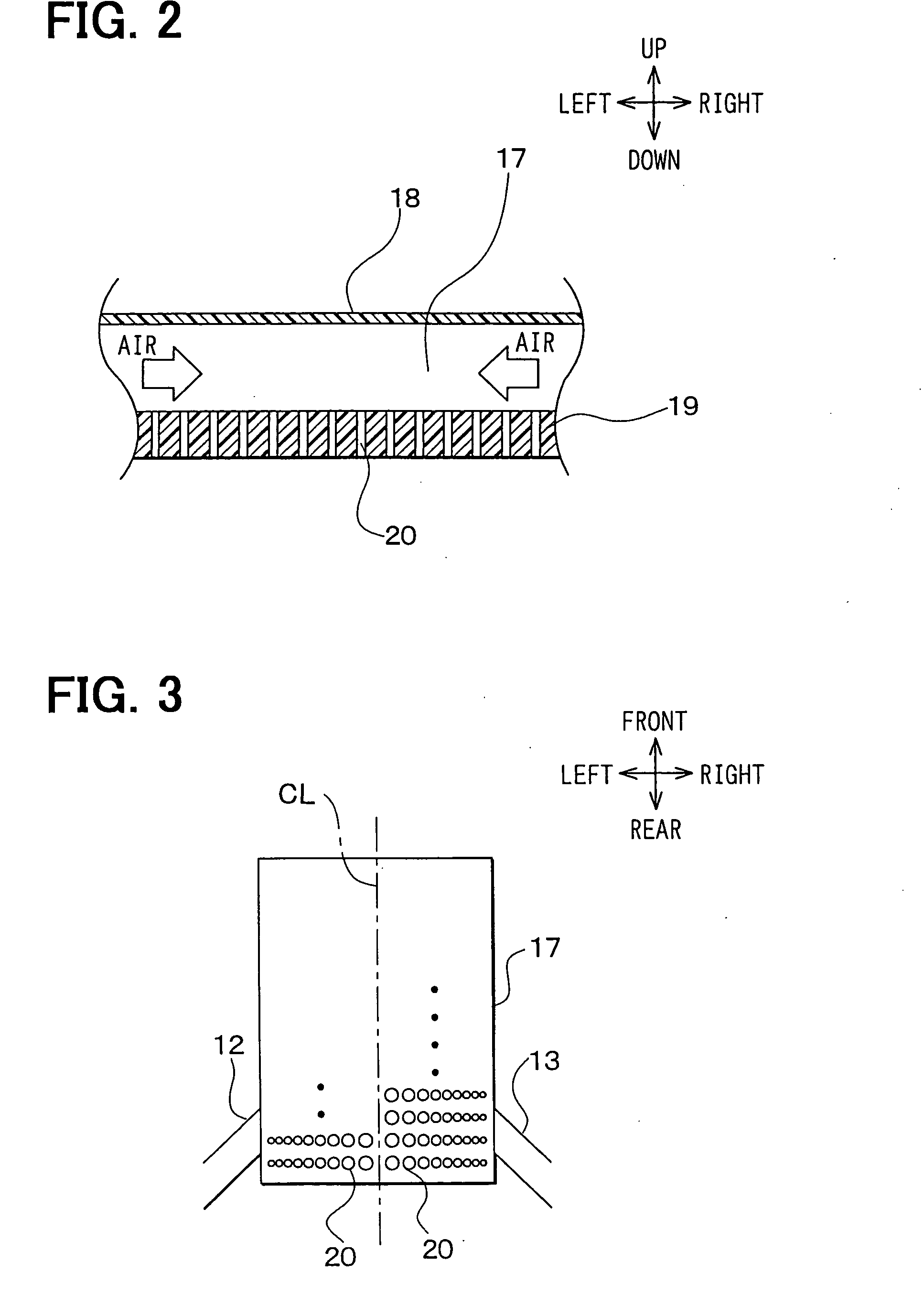Ceiling air-blowing device for a vehicle air conditioner
- Summary
- Abstract
- Description
- Claims
- Application Information
AI Technical Summary
Benefits of technology
Problems solved by technology
Method used
Image
Examples
first embodiment
[0035] Referring to FIG. 1, a vehicle air conditioner includes a front air conditioner unit 10 and a rear air conditioner unit 11, as interior air conditioner units. The front air conditioner unit 10 is arranged in a space inside of an instrument panel, which is located at a very front position of a passenger compartment. The front air conditioner unit 10 air-conditions a front region of the passenger compartment. The rear air conditioner unit 11 is arranged under a luggage compartment lid, which is located at a very rear position of the passenger compartment. The rear air conditioner unit 11 air-conditions a rear region of the passenger compartment.
[0036] The front and rear air conditioner units 10, 11 have electric blowers, cooling heat exchangers for cooling air blown by the blowers, heating heat exchangers for heating the air, temperature setting devices for setting temperature of air blown into the passenger compartment, air blow mode switching devices, and the like, respectiv...
second embodiment
[0054] Referring FIG. 5, the size of the holes 20 is varied with respect to the front and rear direction of the ceiling in the second embodiment. That is, the area of the openings of the holes 20 at a rear position that is proximate to the end of the pillar ducts 12, 13 is small. The area of the opening of each hole 20 increases toward the front position of the ceiling.
[0055] Accordingly, the volume of air passing through the holes 20 at the rear position is reduced by reducing the area of the openings. Also, the volume of air passing through the hole 20 is increased with a distance from the rear position by increasing the area of the openings. Therefore, the flow velocity of air is uniformed with respect to the front and rear direction of the ceiling.
third embodiment
[0056] Referring FIG. 6, the area of the openings of the holes 20 is varied with respect to both of the front and rear direction and the right and left direction of the ceiling in the third embodiment. The area of the opening of the hole 20 that is located proximate to the right / left end and the rear end of the ceiling is the smallest. The area of the opening of the hole 20 is gradually increased toward the middle position CL and the front position of the ceiling. Accordingly, the flow velocity of the air passing through the holes 20 is uniformed with respect to the front and rear direction and the right and left direction of the ceiling.
PUM
 Login to View More
Login to View More Abstract
Description
Claims
Application Information
 Login to View More
Login to View More - R&D Engineer
- R&D Manager
- IP Professional
- Industry Leading Data Capabilities
- Powerful AI technology
- Patent DNA Extraction
Browse by: Latest US Patents, China's latest patents, Technical Efficacy Thesaurus, Application Domain, Technology Topic, Popular Technical Reports.
© 2024 PatSnap. All rights reserved.Legal|Privacy policy|Modern Slavery Act Transparency Statement|Sitemap|About US| Contact US: help@patsnap.com










